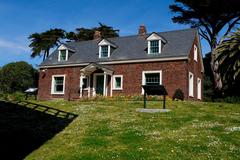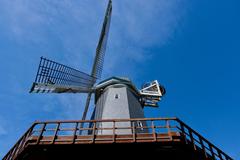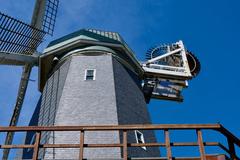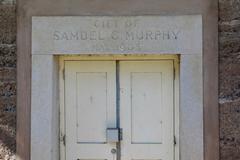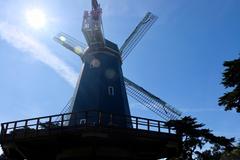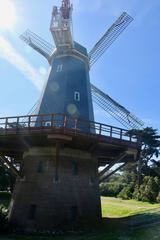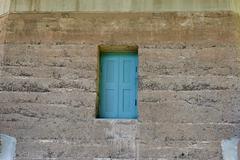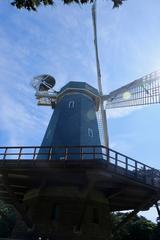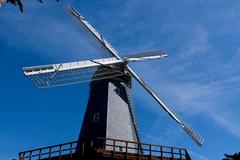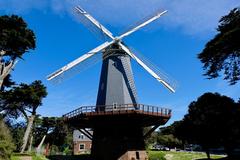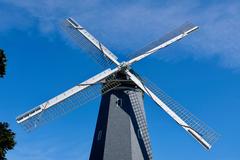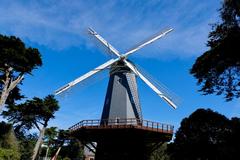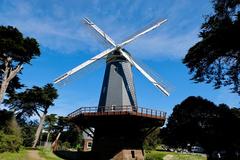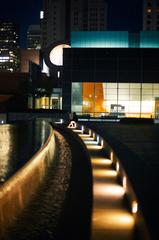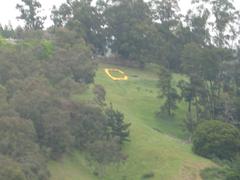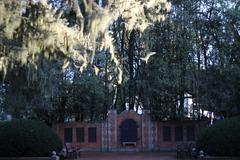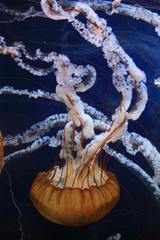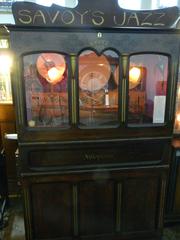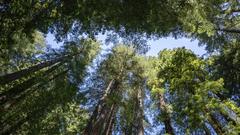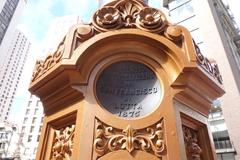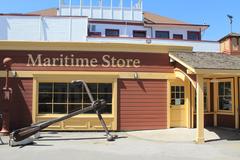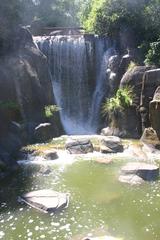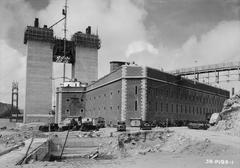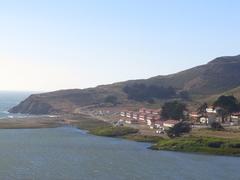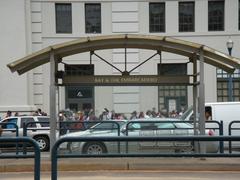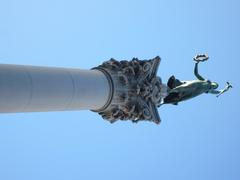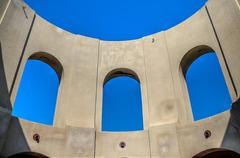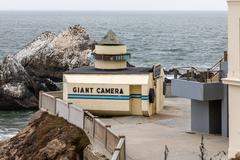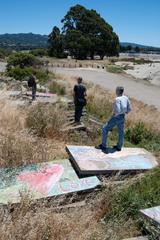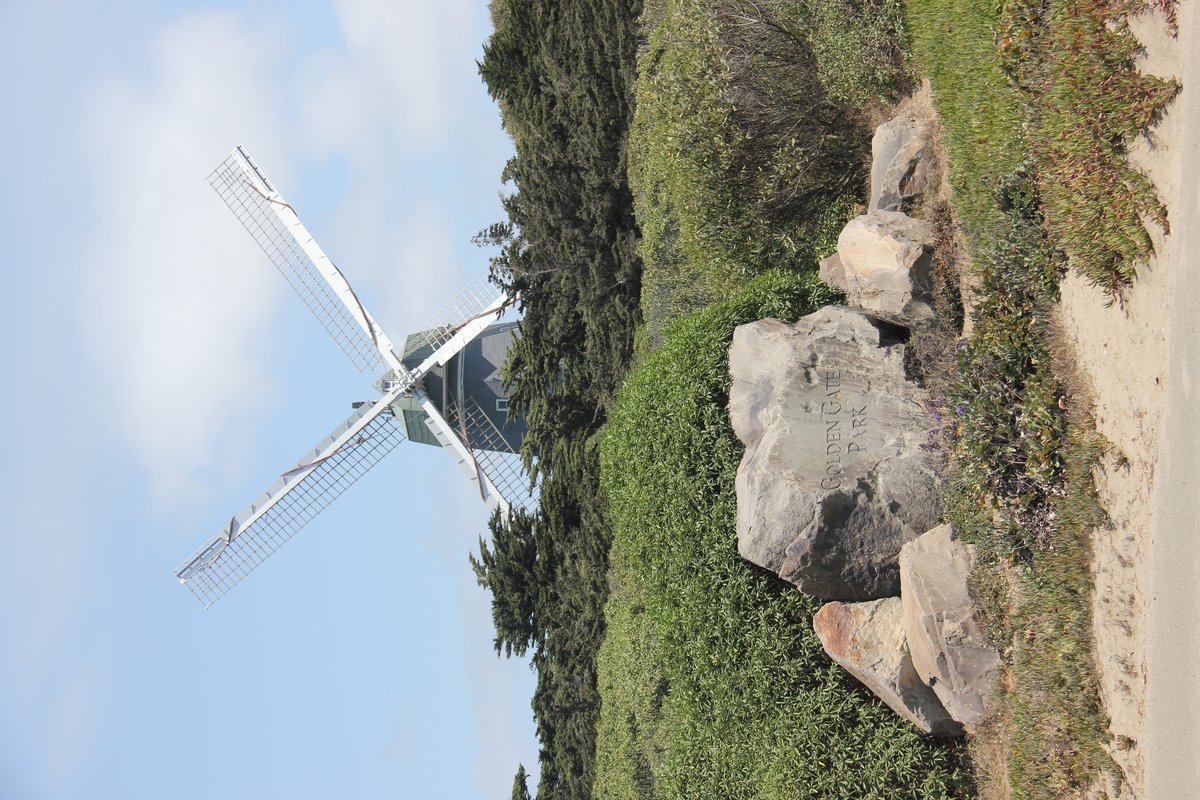
Comprehensive Guide to Visiting Murphy Windmill, San Francisco, United States
Date: 24/07/2024
Introduction
Welcome to the comprehensive guide on visiting the iconic Murphy Windmill in San Francisco, located in the southwest corner of Golden Gate Park. The Murphy Windmill, also known as the South Windmill, is not only an architectural marvel but also a testament to San Francisco’s dedication to preserving its historical landmarks. Built between 1907 and 1908, this windmill was once the largest of its kind in the world, designed by Bay Area engineer J. C. H. Stut and funded by banker Samuel G. Murphy (outsidelands.org) (inspiredimperfection.com). Initially constructed to aid in the irrigation of Golden Gate Park, the windmill could pump up to 40,000 gallons of water per hour, significantly reducing the city’s reliance on costly water sources (electrictourcompany.com). Over the decades, the windmill fell into disrepair but has since been meticulously restored, capturing the interest of history enthusiasts, photographers, and visitors alike. Today, it stands as a symbol of early 20th-century engineering and a cultural landmark, drawing both locals and tourists to explore its grandeur and historical significance.
Table of Contents
- Introduction
- Construction and Early Purpose
- Decline and Disrepair
- Restoration Efforts
- Modern-Day Significance
- Unique Features and Fun Facts
- Visitor Experience
- Practical Information for Visitors
- FAQs
- Conclusion
Construction and Early Purpose
The Murphy Windmill, also known as the South Windmill, was constructed between 1907 and 1908 in the southwest corner of Golden Gate Park, near 48th Avenue and Lincoln Way. This monumental structure was a gift to the city from banker Samuel G. Murphy, who donated $20,000 for its construction (outsidelands.org). The windmill was designed by Bay Area engineer J. C. H. Stut, incorporating mechanical elements of both Dutch and European influence, along with unique Western touches (inspiredimperfection.com).
When completed, the Murphy Windmill was the largest of its kind in the world, boasting 114-foot-long sails, each cut from a single log. It was capable of pumping 40,000 gallons of well water per hour, a crucial function for the park’s irrigation system. This was particularly important as it helped the city avoid the high costs charged by the private Spring Valley Water Company (electrictourcompany.com).
Decline and Disrepair
The advent of electric water pumps quickly rendered the windmill’s original purpose obsolete. By 1913, both the Murphy and Dutch Windmills had received electric pumps, making their rotating sails irrelevant. The windmills were decommissioned in 1935 after modern irrigation systems were installed in the park (inspiredimperfection.com). Over the decades following World War II, the Murphy Windmill fell into significant disrepair, spending more years without its massive spars and sails than with them (outsidelands.org).
Restoration Efforts
The first attempt to restore the Murphy Windmill occurred in 1947, involving minor repairs and the replacement of the sail stocks. The new 114-foot spars, made out of six tons of laminated wood, were shipped from Portland, Oregon, and their size caused significant logistical challenges, including taking up three railroad cars and entangling traffic for an entire afternoon (inspiredimperfection.com).
In the late 1960s, Eleanor Rossi Crabtree, daughter of former San Francisco mayor Angelo Rossi, spearheaded a campaign to restore both the Murphy and Dutch Windmills. This led to the formation of the San Francisco Citizens Commission for the Restoration of the Golden Gate Park Windmills in 1964 (electrictourcompany.com).
Comprehensive Restoration (2002-2012)
A more comprehensive restoration effort began in 2002, led by the San Francisco Recreation and Parks Department. This project was divided into three phases:
-
Cataloging and Dismantling - Every piece of the windmill was cataloged, and the wood and iron elements were dismantled. Salvageable pieces were identified for reuse, and the cap structure was restored. The cap elements were transported to Holland by ship and reconditioned by Dutch millwright Lucas Verbij (inspiredimperfection.com).
-
Rehabilitation and Installation - The second phase involved rehabilitating the concrete base and the slate-clad tower. The restored cap, sails, and gears were then installed. This phase was crucial in bringing the windmill back to its former glory (inspiredimperfection.com).
-
Water Pumping System and Landscaping - The final phase included the installation of a new water pumping system and landscape improvements around the windmill. This phase ensured that the windmill not only looked historically accurate but also functioned in a manner reminiscent of its original purpose (inspiredimperfection.com).
Modern-Day Significance
The restoration of the Murphy Windmill was completed in 2012, and today, its massive spars and sails can often be seen turning in the face of Pacific breezes (outsidelands.org). This iconic structure stands as a testament to the park’s history and the determination of San Franciscans to preserve their city’s landmarks. It serves as a living piece of San Francisco’s rich history, reminding visitors of the city’s dedication to maintaining its cherished landmarks (electrictourcompany.com).
Unique Features and Fun Facts
One fascinating aspect of the Murphy Windmill is its clockwise rotation, which is opposite to the traditional counterclockwise rotation of windmills in the Netherlands. This unique feature adds to the windmill’s allure and distinguishes it from its European counterparts (electrictourcompany.com).
The windmill also had a moment of fame when it appeared in the 1915 Charlie Chaplin movie, “The Jitney Elopement” (outsidelands.org). This cinematic appearance further cements its place in both local and popular culture.
Visitor Experience
While the Murphy Windmill is no longer in functional use, visitors can still witness its majestic sails spinning on weekends and holidays. The windmill is accessible via an easy flat trail that also goes past the Beach Chalet and the Blue Boat Playground (roadtrippingcalifornia.com). For those visiting in February or March, the nearby Queen Wilhelmina Tulip Garden offers a breathtaking display of vibrant tulips in full bloom, adding to the picturesque scene (roadtrippingcalifornia.com).
Practical Information for Visitors
- Visiting Hours: The windmill can be viewed at any time, but the sails typically spin on weekends and holidays.
- Tickets: There is no entry fee to see the windmill.
- Accessibility: The site is accessible via a flat trail suitable for all visitors.
- Nearby Attractions: Don’t miss the Beach Chalet, Blue Boat Playground, and the Queen Wilhelmina Tulip Garden.
- Travel Tips: Wear comfortable walking shoes and bring a camera to capture the stunning views.
FAQs
Q: What are the visiting hours for Murphy Windmill?
A: The windmill can be viewed at any time, but the sails typically spin on weekends and holidays.
Q: Is there an entry fee for Murphy Windmill?
A: There is no entry fee to see the windmill.
Q: What nearby attractions should I visit?
A: Be sure to check out the Beach Chalet, Blue Boat Playground, and the Queen Wilhelmina Tulip Garden.
Conclusion
In summary, the Murphy Windmill’s history is a rich tapestry of innovation, decline, and revival. Its story reflects the broader narrative of San Francisco’s commitment to preserving its historical landmarks and offers visitors a unique glimpse into the city’s past. Whether you’re a history buff, a photography enthusiast, or simply looking for a beautiful spot to visit, the Murphy Windmill is a must-see. Follow our tips for an unforgettable experience, and make sure to check out other historical sites in San Francisco. Stay updated on upcoming events and more historical insights by following our social media channels and downloading our mobile app Audiala. The Murphy Windmill stands as a testament to San Francisco’s rich history and continued dedication to maintaining its cultural heritage for future generations.

